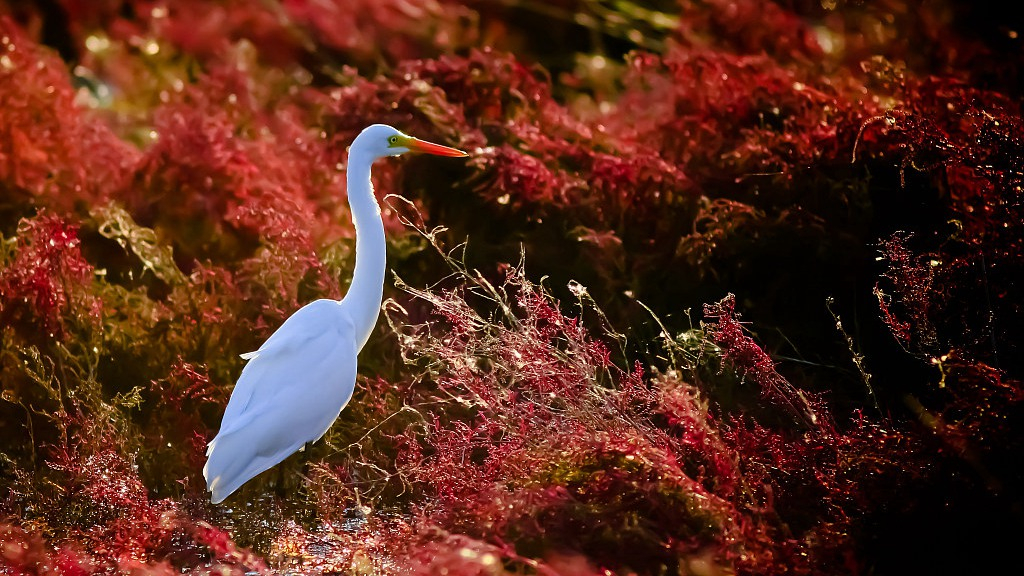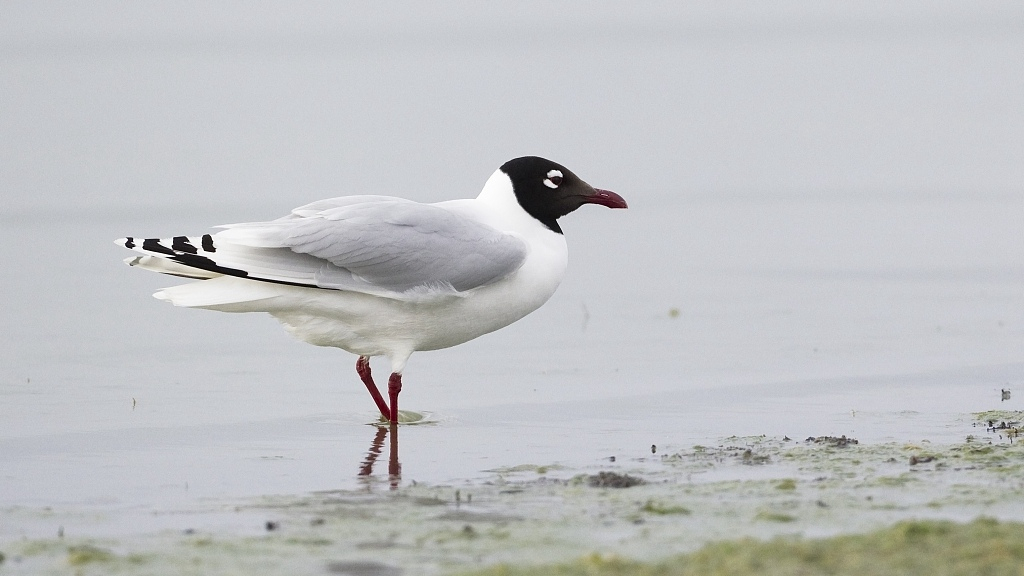
Nature
11:02, 17-Jan-2019
Beidagang Wetland: birds' paradise in N China
Updated
19:55, 17-Jan-2019
CGTN

In early winter, when a blanket of seepweed merges with the yellow bulrush in north China's Beidagang Wetland, numerous tired migratory waterbirds appear on the rich mudflats. This wetland, only 150 kilometers southeast of Beijing, is one of the most important stopovers for migratory waterbirds in the East Asia-Australasian Flyway.

More than 10,000 relict gulls can be seen in winter on the coastal wetlands of Tianjin. /Photo by Terry Townshend
More than 10,000 relict gulls can be seen in winter on the coastal wetlands of Tianjin. /Photo by Terry Townshend
Recent surveys carried out by Professor Zhang Zhengwang and his team from Beijing Normal University had recorded 99 species of birds, a combined population of 467,686, at Beidagang Wetland since July 2017. Among these birds, many are listed as vulnerable or endangered by the International Union for Conservation of Nature (IUCN) Red List of Threatened Species.
Among many precious species that stay at Beidagang, the relict gulls are the most funny-looking visitors. They have orange legs and scarlet bills, and eyes that almost look like googly eyes. The highest record of population here is 12,767, which is higher than the world's estimated population of this species. The combination of freshwater and coastal wetlands makes Beidagang their favorite winter home.

Closeup of a relict gull. /VCG Photo
Closeup of a relict gull. /VCG Photo
The Oriental white stork is a solitary avian globe-trotter. It can fly thousands of kilometers relentlessly to find its favorite wintering area. After soaring for months across the Siberian sky, it finally settles down for winter at Beidagang Wetland. About 45 percent of the world's Oriental white storks stay, and sometimes breed, here.

White-naped crane is one of the endangered species that benefits from Beidagang Wetland. /Photo by Terry Townshend
White-naped crane is one of the endangered species that benefits from Beidagang Wetland. /Photo by Terry Townshend
Beidagang also embraces around 20 percent of the world's white-naped cranes. Their red face patches, grey and white striped neck, and pinkish legs make them look like they just have flown out of a Chinese ink painting.

A red-throated loon. /VCG Photo
A red-throated loon. /VCG Photo
White-headed duck, streaked shearwater, red-throated loon and snow geese were also observed at Beidagang in 2018. However, the sightings of several greater flamingos was an amazing experience for bird-watchers.
The surveys clearly proved Beidagang to be an important site for numerous endangered species. “The results of these surveys show the global importance of Beidagang as breeding, stopover and winter site for waterbirds and makes it one of the most important sites along the East Asian-Australasian Flyway,” Professor Zhang Zhengwang said.

Beidagang Wetland. /Photo by Beijing Normal University
Beidagang Wetland. /Photo by Beijing Normal University
Designed to help train the local staff at the Beidagang Wetland Nature Reserve Management Center, a project was set up by the Paulson Institute under an agreement with government authorities. The project includes several surveys carried out by academics and volunteers that will help to build an effective long-term monitoring scheme of the water birds and other wetland resources for China.

SITEMAP
Copyright © 2018 CGTN. Beijing ICP prepared NO.16065310-3
Copyright © 2018 CGTN. Beijing ICP prepared NO.16065310-3